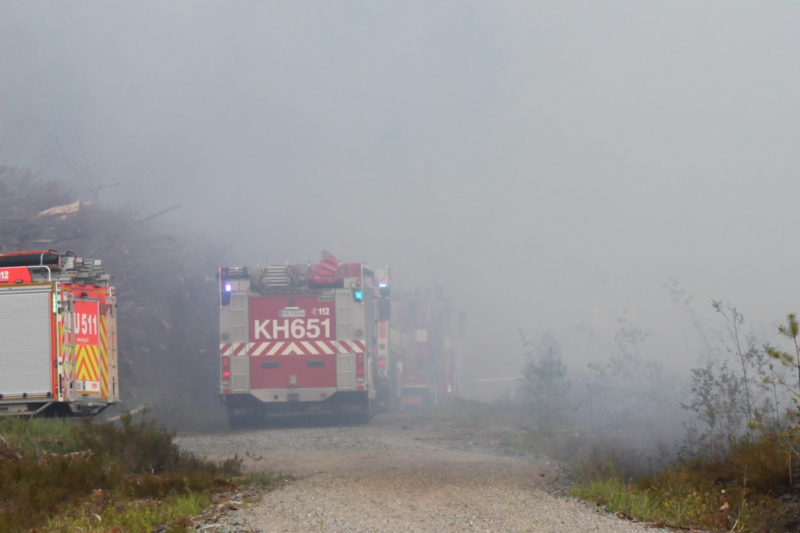California wildfires: why these are not possible in the “forest nation” Finland

The forested northern European country Finland has invested greatly in fighting forest fires. Responsible citizens and sustainable forest management play a key role.
The Finnish way to prevent forest fires starts from a responsible use of forests.
“Although everyone can, thanks to everyman’s rights, move about in all Finnish forests, people are extremely responsible about making a fire,” says Markku Remes, Senior Expert of Forest Management at the Finnish Forest Centre.
Everyman’s rights do not permit the lighting of a fire in a forest owned by somebody else. In practice, it is impossible to monitor whether or not this rule is observed in a country with four hectares of forest per capita. However, people are very careful about making a fire in the forest.
Another cornerstone of fire prevention is the detection system. As soon as a dry period sets in, planes will start flying over Finnish forests looking for smoke and pockets of fire. Summer 2018, for example, was so dry that the funding for aerial detection was already used up by the early summer, but the patrolling was not cancelled.
“The necessary funding will be found somewhere. Everybody understands that if the aerial patrolling is cancelled just when it is most needed, the risk of even bigger losses will increase,” says Remes.
Forest roads and rivers as firewalls
In Finland, once a fire starts, it will be restricted by the very dense network of forest roads, unless it has gained considerable strength. In addition to this, the forests are fragmented because of natural reasons. Rivers, lakes and mires break the forests into a mosaic where fires will not spread as easily as in unbroken forest.

“The natural fragmentation is reinforced by the fact that the forest compartments where forestry operations are carried out are relatively small, averaging about 1.5 hectares in southern Finland,” says Remes.
In northern America, areas where forestry operations are carried out simultaneously may be even hundreds of hectares in size.
Forestry based on clearcutting may create an advantage in that young forest stands, at least, may not catch fire very easily.
“At this stage, the amount of deadwood in the forest is small and in general, there is not that much to burn in the forest, so a rampant fire cannot really develop,” says Remes.
Under different conditions, such as in a forest that has been logged selectively, a great deal of deadwood may be present and the risk for the fire spreading via tree canopies is high, as was also seen in California.
Good fire prevention requires cooperation
In Finland, the cooperation between authorities and private stakeholders is seamless. The structure is in place in advance, so everyone knows what to do when a fire starts. For example, power companies are part of the network, so they can cut the supply to power lines in areas with fires.
In addition, forest use may be temporarily restricted in many ways to prevent fires. The forest fire warning announcements are a routine during summers in Finland, and while they are in force, open fires are not allowed out of doors, not even so much as a burning match.
Forestry operations may also be restricted, because a fire can start from sparks from the rollers or other parts of forestry machines.
Fire prevention is considered important, and if required, the authorities are entitled to requisition any resources available, including private individuals.
“If requested by the authorities, no one can refuse to take part in fire fighting, not to mention refusing the use of equipment necessary for fire prevention,” says Remes.
“Luckily, there has been no need for such demands lately. This is because the cornerstone of fire prevention are the voluntary fire brigades, which can be found in numerous localities all over Finland,” says Remes.
Remes also mentions the extensive forest road network. “It enables the fire brigades to reach the fires quickly.”
Raking and good forest management
U.S. President Donald Trump visited California this week and told the media that there are no forest fire problems in other countries, such as Austria or Finland. According to Trump, it is because these “forest nations” are managing their forests.
In 2018, Trump also referred to Finland when it burned in California. The strongest reactions to President Trump’s statement were caused by his claim that forest fires are rare in Finland because the forest floor is raked clean of vegetable litter. This, however, was a misconception: rakes such as those used in gardening are not used in Finnish forests.
Still, the verb “to rake” used by the President in 2018, also has the meaning “to gather logging residue from the forest floor”, and this kind of activity is carried out in Finnish forests, and partially in order to decrease the amount of flammable biomass on the forest floor.
It is a completely different matter whether forest fires can be combated under any circumstances if rainfall is almost non-existent. In Finland, the rainfall is many times higher than in California. Another difference is the nature of winds, which are strong, hot and dry in California. In Finland we have rarely seen similar winds.
“It is fair to say that our climate is a good friend of the fire brigades,” says Remes.
The article has been updated from an article published on 21.11.2018.